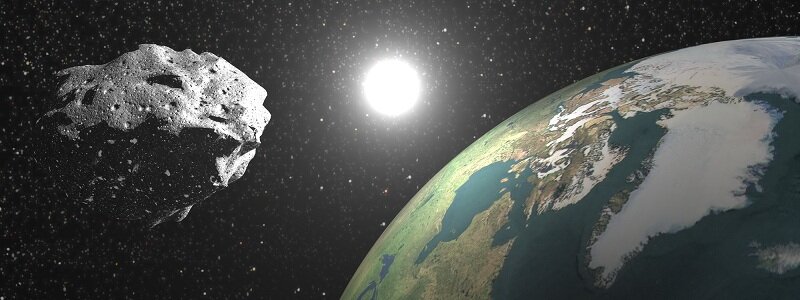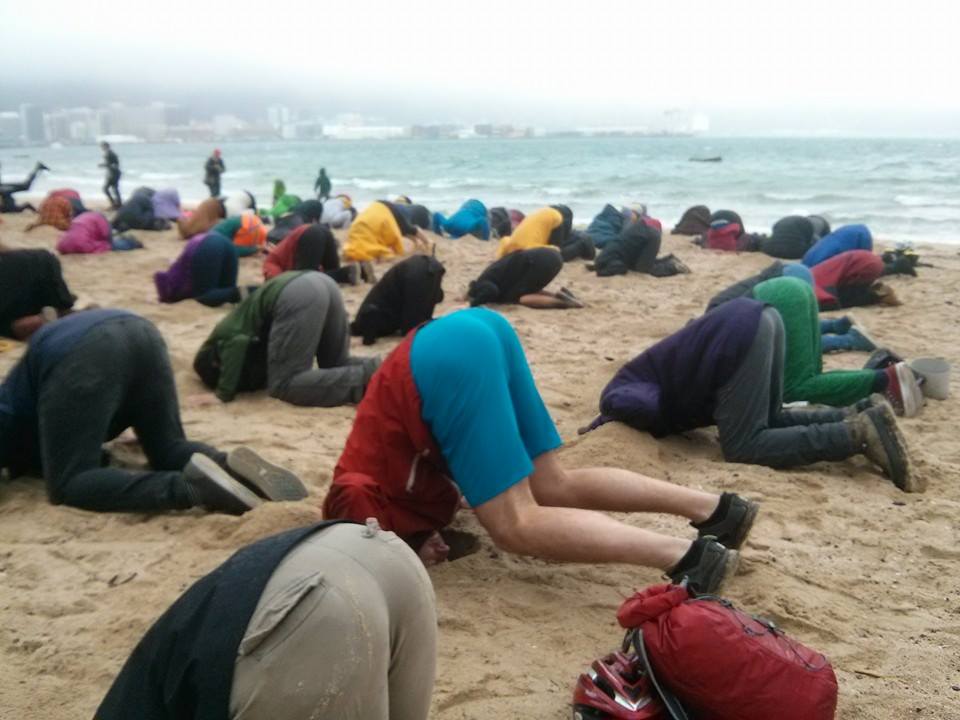nivek
As Above So Below
Scientist Says NASA is Hiding the Truth About Deadly Asteroids

Nathan Myhrvold thinks NASA is up to something. The “modernist cookbook“ author, physics PhD, and former Microsoft executive has just published a peer-reviewed paper refuting NASA’s data concerning NASA’s analysis of near Earth objects, the potentially deadly asteroids and meteoroids and other objects whizzing about in the area of space just outside of our orbit. According to Myrhvold’s calculations, NASA’s data “suffer from systematic errors and inconsistencies.” Does this mean we’re in a lot more danger than NASA is letting on?

The last thing most of us will ever see: our phones.
Let’s hope not, especially given how utterly unprepared we still are for the event of even a minor asteroid impact. In a blog post, Myhrvold doesn’t specifically state that NASA is intentionally under-reporting the amount of near Earth objects tracked by their NEOWISE project (short for Near Earth Object Wide-field Infrared Survey Explorer), but does accuse NASA scientists of “scientific misconduct” and “further misconduct, apparently to cover up the issues” he previously pointed out in their data:
The issues I am calling misconduct in the NEOWISE papers were not inadvertent. They appear to have been deliberate choices made repeatedly by the NEOWISE team over a long period of time. These actions have caused the astronomical community to work under the false belief that the NEOWISE results are more accurate (have smaller errors) than the evidence warrants.
Myhrvold goes on to accuse scientists working on the NEOWISE project of reacting “extremely deceptively,” claiming that NEOWISE scientists ignored his attempts to point out the inaccuracies in private and that “the very NASA managers who should have been supervising the project were more interested in protecting it from scrutiny.”

NASA wouldn’t lie to us, would they?
The reason the NEOWISE data are so important is because hundreds of scientists and even space agencies around the world have used the data for their own separate studies and missions. With so much riding on our ability to understand the NEO activity above our heads, it’s imperative that scientists have the most accurate data available in order to someday be able to protect us from a potentially cataclysmic impact.
For their part, NEOWISE has yet to comment on Myhrvold’s critique of their data. “The NEOWISE team stands by its data and scientific findings that have been published in several peer-reviewed journal articles,” a NASA spokesperson said in a statement. “NASA is confident the processes and analyses performed by the NEOWISE team are valid, as verified by independent researchers.” Meanwhile, UCLA’s Edward L. Wright, head of the NEOWISE project, called Myhrvold’s publication “a waste of paper.”
Is this merely a case of scientists splitting methodological hairs, or might there be some sort of attempt to hide the truth about NEOs?
Furthermore, do we really want to know the truth?
Personally, I like sleeping at night. Some threats are better left in the dark.
.

Nathan Myhrvold thinks NASA is up to something. The “modernist cookbook“ author, physics PhD, and former Microsoft executive has just published a peer-reviewed paper refuting NASA’s data concerning NASA’s analysis of near Earth objects, the potentially deadly asteroids and meteoroids and other objects whizzing about in the area of space just outside of our orbit. According to Myrhvold’s calculations, NASA’s data “suffer from systematic errors and inconsistencies.” Does this mean we’re in a lot more danger than NASA is letting on?

The last thing most of us will ever see: our phones.
Let’s hope not, especially given how utterly unprepared we still are for the event of even a minor asteroid impact. In a blog post, Myhrvold doesn’t specifically state that NASA is intentionally under-reporting the amount of near Earth objects tracked by their NEOWISE project (short for Near Earth Object Wide-field Infrared Survey Explorer), but does accuse NASA scientists of “scientific misconduct” and “further misconduct, apparently to cover up the issues” he previously pointed out in their data:
The issues I am calling misconduct in the NEOWISE papers were not inadvertent. They appear to have been deliberate choices made repeatedly by the NEOWISE team over a long period of time. These actions have caused the astronomical community to work under the false belief that the NEOWISE results are more accurate (have smaller errors) than the evidence warrants.
Myhrvold goes on to accuse scientists working on the NEOWISE project of reacting “extremely deceptively,” claiming that NEOWISE scientists ignored his attempts to point out the inaccuracies in private and that “the very NASA managers who should have been supervising the project were more interested in protecting it from scrutiny.”

NASA wouldn’t lie to us, would they?
The reason the NEOWISE data are so important is because hundreds of scientists and even space agencies around the world have used the data for their own separate studies and missions. With so much riding on our ability to understand the NEO activity above our heads, it’s imperative that scientists have the most accurate data available in order to someday be able to protect us from a potentially cataclysmic impact.
For their part, NEOWISE has yet to comment on Myhrvold’s critique of their data. “The NEOWISE team stands by its data and scientific findings that have been published in several peer-reviewed journal articles,” a NASA spokesperson said in a statement. “NASA is confident the processes and analyses performed by the NEOWISE team are valid, as verified by independent researchers.” Meanwhile, UCLA’s Edward L. Wright, head of the NEOWISE project, called Myhrvold’s publication “a waste of paper.”
Is this merely a case of scientists splitting methodological hairs, or might there be some sort of attempt to hide the truth about NEOs?
Furthermore, do we really want to know the truth?
Personally, I like sleeping at night. Some threats are better left in the dark.
.

